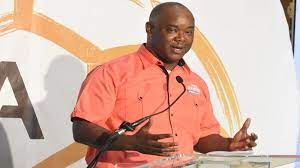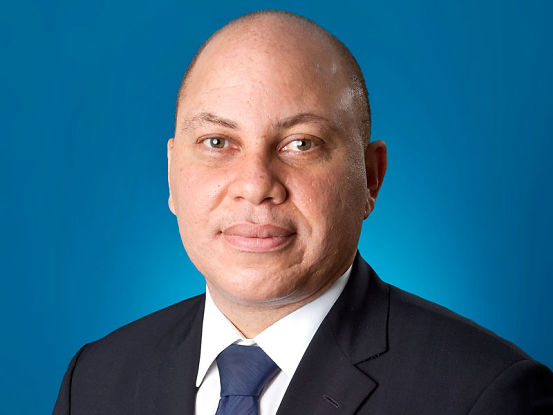WHAT IS THE BEST way for a Board of Directors to fire a company’s Chief Executive Officer? That’s easy: quick, quiet, and cheap. In this imperfect world, though, it rarely works that way.

For CEOs, these are days of living dangerously. With raiders so active and stockholder suits against directors on the rise, the subject of how and when to get rid of a slumping Chief Executive Officer has gripped boardrooms. Directors are becoming more analytical, more sophisticated — and more nervous about subpar performance. Hardly a week goes by without some corporate sequoia crashing to earth. The clamour over celebrated sackings heralds a broader reality. ”The average tenure of the chief executive is going down,” says Professor Thomas Whisler of the University of Chicago’s Graduate School of Business. He adds dryly, ”I don’t think that is because he is appointed at a later age or is retiring earlier.” Whisler has written a wise and witty book for board members titled Rules of the Game. His last chapter is called ”Flushing the CEO.” He says that some readers objected to the verb but found the book useful.
Before a board decides how and when, it has to decide why — and that means reviewing its expectations of the potential victim. A dissatisfied board has to ask: What did we expect of this guy; where did he fall short? There are four major reasons for replacing a CEO, according to E. Pendleton James, former Personnel Director for the Reagan White House who now owns an executive recruiting firm and is on several boards. Loss of earnings is one, but not always the most crucial. Pen James ticks off the others: ”Most important, dishonesty and malfeasance. Second, dissatisfaction within the corporation that has reached such levels that the board has to get involved. Third, personal or social behaviour by the CEO that is embarrassing the corporation and through it members of the board.”
James stresses, as did many others interviewed for this article, that when a board evaluates a chief executive’s performance, ”there are no rights and no wrongs, only grays.” A chief executive’s departure is, like divorce, evidence of a relationship gone terminally sour. What that relationship should be varies from company to company, but there are certain givens. They sound a little like marriage vows.
Perhaps foremost is candour. ”It is a partnership in which each side is completely open with the other,” says J. Peter Grace, who has run W.R. Grace for 45 years and is a member of six other boards. ”No secrets and no fooling around. If you give any director the slightest feeling that you’re not telling the whole story, that’s when trouble starts.” Wily veteran Grace surely keeps a few tidbits from his amiable board, but Lord help the boss who goes too far. If the 0board expects honesty, the CEO has every right to expect it to stay out of his toupee.
A familiar complaint about boards is that they try to run the company, forgetting that they hired the chief executive to do the job. Drew Lewis, former Secretary of Transportation who is now Chief Operating Officer of Union Pacific and is scheduled to move up to CEO, says that he hopes to use his board ”as a long-range policy guide and short-range policymaker — not to get involved in day-to-day operations.”
Among the reasons for firing the boss, dishonesty is probably the rarest.
Flamboyant behaviour is seldom a factor in changing CEOs. Still, Robert Buckley, who left Allegheny under fire, was accused in shareholder suits of financing his lavish lifestyle with corporate funds, among other charges.
Among all the reasons for replacing a CEO, poor earnings are the most obvious. But they are often a symptom of other, less treatable corporate ailments. Measuring a decrease in returns or market share is pretty simple bookkeeping; figuring out why is the hard part. ”Directors are smart enough to know that usually there are no clear answers,” says Professor Whisler. He suggests scepticism when a company concentrates on losses in explaining why the boss is leaving. Last year BankAmerica Corp. reported a disastrous second quarter just before it shoved out Sam Armacost. ”The board simply came up with a reason,” Whisler says. ”That’s what a board seizes on.” Security analysts say BankAmerica has lots of problems, including too many bad loans, too many small and expensive branches, and a back office that struggles with outdated systems because management — including the one before Armacost — failed to make the necessary investment in technology.
As Grace points out, dissatisfaction with a CEO usually originates with a few board members, maybe two or three; they discuss it with others, discreetly at first, then more boldly. Several directors may meet for dinner on the night before a board meeting, ostensibly for fellowship, actually to poll the jury on the death sentence. Because he has been involved in so many start-ups, in which management changes are frequent and abrupt, venture capitalist Dunn is a veteran at the process. He says he has fired 15 presidents over the past 20 years: ”It is traumatic and painful. Guys who get fired or are asked to resign are not bad guys. They are hard workers who have tried to the best of their ability to do a job and haven’t done it, or have done it for a while and then the job outgrew them.” Once the decision is made, or when dissident directors feel they have a majority, speed is recommended by everyone who has endured this melancholy event.
, these severance packages include salary, stock options, fees, insurance and medical policies. When the numbers leak out or are revealed in the annual report, employees are shocked and stockholders dismayed (sometimes to the point of suing the board). Directors by and large take an Olympian view of these settlements. Even David Dunn, who irascibly calls them ”bribes to keep your mouth shut,” thinks that ”if a guy has done a hell of a job and the company has outgrown him, you’d be kind of brutal to throw him out into the street. You should try to take care of him and lubricate his passage to another job.”
Board members who are or have been chief executives themselves are — unsurprisingly — particularly empathetic with another member of the club. ”You have a certain lifestyle as a CEO,” says Drew Lewis. ”You belong to clubs, you entertain, you have the big house, the lawn service, the pool service; you do things differently. The least a chief executive who gets fired should expect is two or three years to get his feet on the ground. You take a guy who is making $250,000 to $400,000 a year, and he’s been living on that for ten years; he’s got one heck of a problem when he tries to live on $100,000. You’ve got to give him some kind of transition out of it.”
Another argument for generosity is to avoid discouraging potential successors. ”If you rough up the CEO and kick him down the stairs,” says Whisler, ”you can create a situation that scares the hell out of any possible candidate.” Headhunter Pen James admits that ”such candidates will question me very intensively. Nobody wants to be another fallen hero.”
As the ranks of vanished chief executives grow, the question inevitably rises: How do they make out after being fired? Is there life after the executive suite? Generalizations are difficult, but most ex-CEOs can be described as financially comfortable and professionally miserable. They are usually on the prowl for other jobs at the top, sometimes with success — although two major headhunters, who don’t want to be named, say the victim of a noisy corporate upheaval last year is virtually unemployable at the moment. He is still being blamed for the serious troubles his company continues to suffer under the new management. Steve Jobs, though said to be ”very bitter,” has started a new computer company called Next that is aimed at the educational market. Tom Wyman has lost 15 pounds since he left CBS, plays a lot of golf and tennis, continues to serve on the boards of several corporations, and is, says a friend, ”his low- key, amiable self.” But from his own experience with former CEOs, Drew Lewis draws a gloomy picture. ”About half of them are devastated and never recover,” he says. ”There is also the age problem. They are usually 55 to 62. At that point you really don’t want to report to an executive vice president somewhere.” Some of these casualties move out of management entirely. ”A lot of them,” says Lewis sadly, ”become consultants.”
Originally published in FORTUNE Magazine By Richard B. Stolley REPORTER ASSOCIATE Marta F. Dorion August 31, 1987

 Businessuite News24 International2 years ago
Businessuite News24 International2 years ago
 Feedback & What You Think2 years ago
Feedback & What You Think2 years ago
 Marketing & Advertising2 years ago
Marketing & Advertising2 years ago
 Businessuite Women1 year ago
Businessuite Women1 year ago
 Businessuite 50 Power and Influence1 year ago
Businessuite 50 Power and Influence1 year ago
 Leadership Conversations1 year ago
Leadership Conversations1 year ago
 Businessuite Markets2 years ago
Businessuite Markets2 years ago
 RANKING7 months ago
RANKING7 months ago








